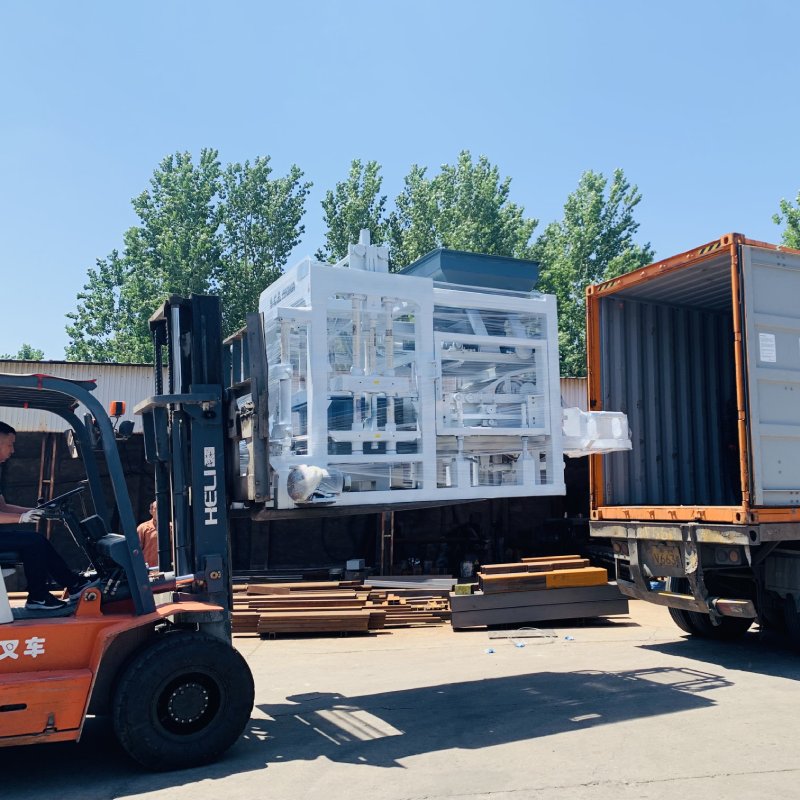This Q&A guide delves into the nuances of brick machines, demystifying the key aspects and shedding light on their role in modern construction.
Unveiling the Secrets of Brick Making Machines
How do Brick Making Machines Work?
Brick Making Machines operate through a semi-automatic or fully automatic process.
Raw materials like clay or concrete are fed into the machine, which molds them into bricks.
The automated system enhances efficiency, ensuring consistent quality.
What Sets Automatic Brick Making Machines Apart?
Automatic Brick Making Machines streamline the production process.
Their automated features, from raw material input to brick formation and stacking, reduce labor, minimize errors, and boost overall efficiency.
The result is a seamless production line that adheres to high-quality standards.
Are Brick Making Machines Environmentally Friendly?
Yes, many modern Brick Making Machines prioritize sustainability.
They often incorporate eco-friendly practices, such as energy-efficient operations and the use of locally sourced materials.
This eco-conscious approach aligns with global efforts towards greener construction practices.

What Types of Bricks Can These Machines Produce?
Brick Making Machines are versatile, producing a wide range of bricks.
From traditional solid bricks to interlocking, perforated, or even specialized shapes, these machines cater to diverse construction needs.
The flexibility ensures compatibility with various architectural styles.
How Do Brick Machines Contribute to Construction Efficiency?
The efficiency of Brick Making Machines lies in their ability to automate repetitive tasks.
This significantly reduces the time required for brick production, accelerating construction timelines.
The machines’ precision ensures uniformity, meeting the demands of rapid construction projects.

Can Brick Making Machines Adapt to Different Construction Scales?
Absolutely. Brick Making Machines are adaptable to various construction scales.
Whether for small-scale residential projects or large-scale infrastructure developments, these machines provide a scalable solution.
Their flexibility makes them invaluable for builders and developers across different project scopes.
What Economic Advantages Do Brick Making Machines Offer?
The economic benefits of Brick Making Machines extend beyond the manufacturing process.
By optimizing production and reducing labor costs, these machines contribute to overall cost-effectiveness in construction.
The economic advantages ripple through the entire construction supply chain, fostering affordability.
Are Brick Making Machines Suitable for Sustainable Construction?
Yes, Brick Making Machines play a crucial role in sustainable construction.
Through their efficient processes, reduced energy consumption, and utilization of eco-friendly materials, these machines align with the principles of sustainable building.
The resulting bricks contribute to environmentally conscious construction practices.
How Do Brick Making Machines Impact Job Opportunities?
While automation streamlines the production process, it can raise concerns about job displacement.
However, the shift towards automated brick production also opens new avenues for skilled jobs in machine operation, maintenance, and technology-related roles.
It represents a transformation in the job landscape, emphasizing the need for upskilling.

What’s the Future of Brick Making Technology?
The future of brick-making technology holds exciting prospects.
Continuous innovation focuses on enhancing automation, improving energy efficiency, and incorporating smart technologies.
The industry anticipates even more sustainable practices, further pushing the boundaries of what Brick Making Machines can achieve.
As we navigate the evolving realm of brick-making technology, this Q&A guide provides a comprehensive understanding of the intricacies surrounding Brick Making Machines.
From their operational mechanisms to their impact on construction efficiency and sustainability, these machines are central to shaping the future of the construction industry.
